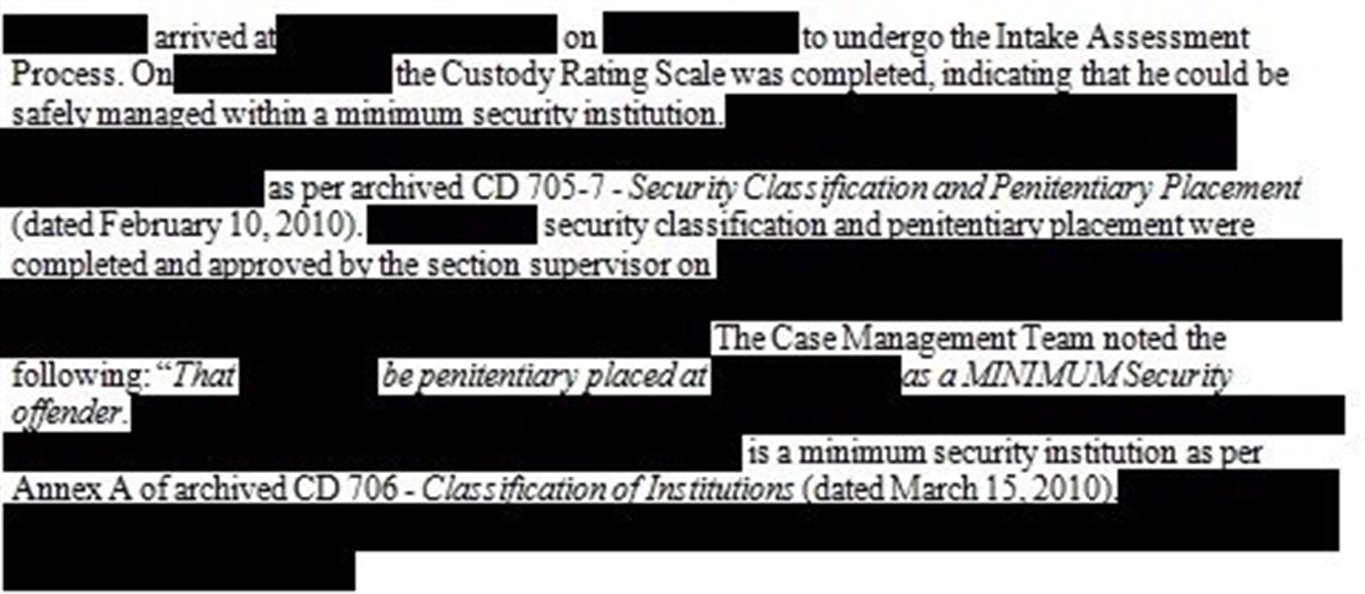
Lisa Adams
Canada routinely tortures women in prison by throwing them into so-called “dry cells”. Today, Lisa Adams, 33 years old and about to end a two-year sentence in the hellhole that is Nova Institution for Women, and advocates from the Elizabeth Fry Society of Mainland Nova Scotia, are challenging that practice in court. Some will ask, “What happened to Lisa Adams?” The real question is, “What happened to Canada?”
Lisa Adams lives with an addiction to methamphetamines and has been diagnosed with bipolar disorder and depression. In March, Lisa Adams was released on day parole. In May, she was picked up on for methamphetamine usage and was taken back to Nova Institution for Women, where she was strip searched and passed through a body scanner. Authorities found nothing in Lisa Adams’ body. A few days later, authorities reconsidered the scan and felt they could perhaps see something, small and round, somewhere in her vagina. Authorities then did a scan of Lisa Adams’ cell and found traces of methamphetamine. They then gave Lisa Adams a urine test, which came back positive. Lisa Adams protested her innocence, explaining that the meth was from her earlier pre-arrest usage and that she did not have any methamphetamine with her. Authorities did not believe her.
At that point, Lisa Adams was dumped into a dry cell, where she stayed for 16 days, from May 6 to May 22. A dry cell is a cell without running water or toilets. The thinking is that by placing someone in a dry cell, authorities can sift through their waste – feces, urine, vomit – and locate the concealed drugs. The prisoner is kept in segregation in that cell, without any water, under 24-hour-a-day surveillance. Lisa Adams stayed in a dry cell for 16 days. She started to tremble, became incoherent, threatened self- harm and suicide. Remember Nova Institution, the hellhole prison where, in 2015, Camille Strickland-Murphy and Veronica Park were effectively executed by the state? That’s where Lisa Adams spent 16 days of hell, and for what?
Lisa Adams only got out of the dry cell when she finally persuaded the authorities to let an actual doctor examine her. The doctor found nothing in her vagina or anywhere else. What the doctor did find was a severely injured woman, who had been battered and abused by the state.
Lisa Adams and her allies went to court today to argue that dry celling is a form of torture. Last year, Canada effectively outlawed solitary confinement, after the court declared keeping anyone in solitary for more than 15 days was cruel, unusual, and torture. Somehow, dry celling does not count as solitary confinement. The segregation is total and absolute, the conditions are nothing short of evil. In fact, the actual material facility of the dry cell is worse than that of solitary confinement. Lisa Adams spent 16 days in dry cell and, again, was only released when she begged for a doctor to perform a real examination.
Lisa Adams explains, “”For me, on a base level, I’d like to have the idea of dry celling removed from female institutions. Because I’m not naive to the fact that drugs are an issue, and there has to be a means to prevent that, I’m hoping that potentially there could be an overhaul throughout all of CSC to find a new way to prevent this from happening. A way that’s less invasive, that’s more trauma-informed and that takes into account the value of the individual as well as the security of the institution … I want the public to see that we are individuals. What happens to us in here is important. People wouldn’t want it to happen to their mother, daughter, sister, wife. They need to keep an eye on that.”
I want the public to see that we are all humans, that what happens in prisons and jails and immigrant detention centers and juvenile detention centers, that what happens “in here”, not only in `correctional institutions’ but in here in our hearts, matters. What happened to Lisa Adams? She was tortured, traumatized.. What happened to Canada, and by extension to all of us?
(Photo Credit: CBC/ Elizabeth Fry Society)


